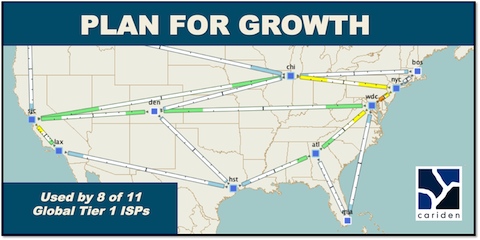Service Evaluation
For any new backhaul opportunity, the first thing the provider does is to see whether the service can be accommodated on their network while maintaining the desired service characteristics and providing the required service level guarantees.
They check if the network can support the expected traffic flows without causing congestion and that the intended path provides resilience in the event of failures in the Layer 3 network or the Layer 1 network on which it is running.
With a model of the network, and advanced simulation features, the network engineers can see where problems might arise before a new demand is placed and avoid them.
Service Accommodation
If the proposed routing for a new circuit does not fit well on the current infrastructure, the routes of existing and new flows will be examined to see if there is a better way to route the required traffic demands so it can all be accommodated without increasing capacity. In this case, the planning solution should be able to provide the necessary steps to reroute the impacted flows without causing congestion while doing so.
If the required circuits do not fit into the existing network infrastructure efficiently, the provider will plan the most effective capacity upgrades for accommodating these requests and any additional forecasted growth. With an abstracted model of the network, planners can investigate alternative design choices and see which is the most cost-efficient for carrying the desired traffic. By integrating these planning and forecasting capabilities with knowledge of the assets already deployed, a full bill of materials and plans can be produced for the required network build out.


Service Design
Once assured that the network is capable of supporting the requested circuits, the provider network engineers are able to design the most efficient routing of traffic. The calculated path layouts identify optimized bandwidth utilization and how to minimize exposure to the risk of network failure through resiliency analysis that considers both Layer 1 and Layer 3 topologies. Having a model of the operating network as it is currently configured, and being able to lay new demands onto it, allows the provider to examine the effect of moving demands through manipulation of IGP metrics or explicit LSP tunnels. This provides the opportunity to balance traffic over the network to better utilize under-used infrastructure and to move flows to avoid planned outages. Such visibility and control is vital for LTE service design as multiple flows can be introduced to the backhaul network for each eNodeB connected.








